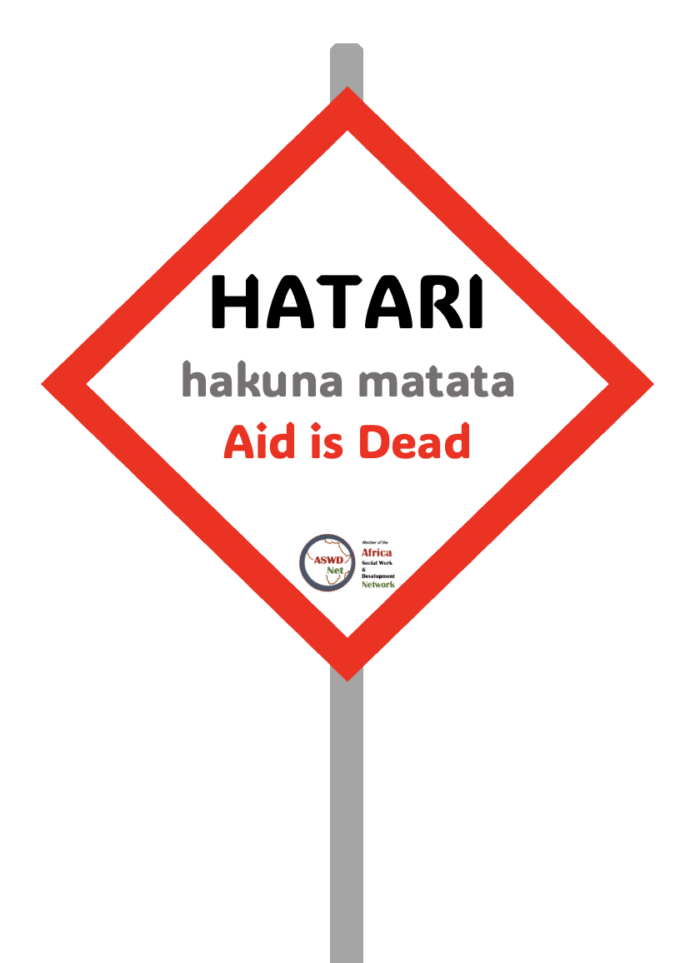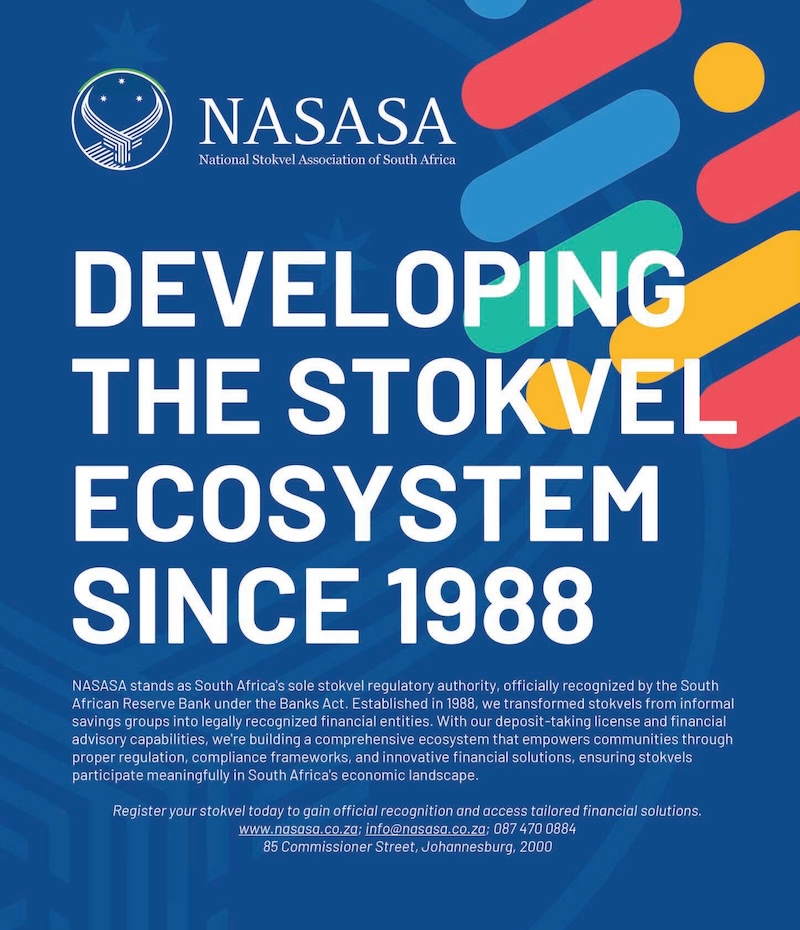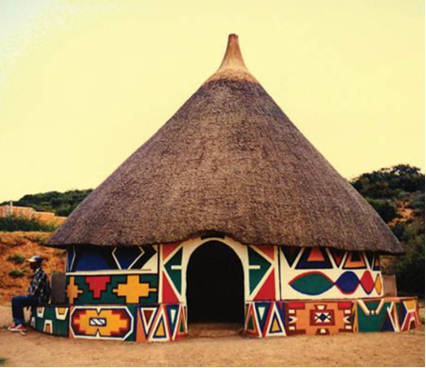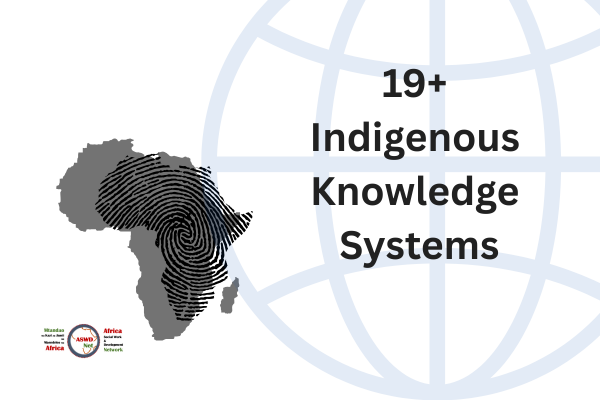
Weaponisation of aid: revisiting Moyo’s Dead Aid Theory
In the context of the United States of America (USA)’s aid cuts to force deals with other countries and to achieve political, social and racial goals, it is important to revisit Dambisa Moyo’s theory of dead aid. The Trump administration has stopped funding to the United Nations institutions such as the World Health Organisation (WHO), has stopped aid funding for USA institutions such as the USAID, which will be disbanded and has suspended health aid funding to countries such as South Africa.
Recent real case studies
USAID aid cut over sexuality activism and other reasons
When you apply Moyo’s theory, it is clear that aid ‘s humanitarian goals (such as supporting HIV therapy) are far less compared to its social, political and economic goals. A lot of USAID, for example was spend throughout the world to promote gay and lesbian activism.
South Africa aid cut over land decolonisation
South Africa received aid for health programs from the USA and this funding was cut to force the country to stop its land return program that seeks to address poverty by giving black people access to land which was forcibly taken from by by white people during the period of colonial occupation. When you apply Dambisa’s theory, it is clear aid has social, racial and political goals.
The Dead Aid Theory and Social Work
Citing information for this documents: African Social Work and Development Network (ASWDNet) (2021). The Dead Aid Theory and Social Work of Social Work. Harare: ASWNET.
Citing information for the theory: Moyo, D. (2009), Dead Aid: Why Aid Is Not Working and How There Is a Better Way for Africa. London: Penguin.
The dead aid theory or myths of aid thesis was published by Dambisa Moyo, a Zambian economist in 2009. Dambisa’s view is that when it comes to Africa, aid is a cancerous disease not the cure. In the 1970s, aid picked but poverty went up in Africa. Asia was poorer than Africa, received little aid, but now Africa which received aid is poorer than Asian countries like China, Singapore, Taiwan and others. In the hands of powerful African leaders and politicians, aid becomes an asset to fight for just like diamonds, it is used for manipulation and corrupt activities. Africa needs economic growth not aid, argues Moyo. More than US$1 trillion dollars has been given to Africa as aid from the west in the last 50 years but as Rwanda President Paul Kagame said, there is little to show for it in terms of human growth and economic development. Former Senegalese President Abdoulaye Wade, said aid alone has never developed a nation. The aid given to Africa so far, is equivalent to over US$1000 per African. Aid has not lived up to expectations of reducing poverty and increasing economic growth. As development and growth strategy or policy, aid has been mythical if not deadly. The thesis can be divided into three ideas (1) what aid is (1) the problems with aid (3) aid-free alternatives.
What is aid?
Dambisa focused her thesis on systematic aid but made it clear that all aid was problematic. In Africa, aid has penetrated every aspect of life (cultural, economic, social, educational, research, family, community, environmental and institutional) and this is problematic for a number of reasons.
- Emergency or humanitarian aid – this kind of aid still has several challenges, and is often poorly implemented making it also problematic.
- Systematic aid – this aid is large-scale and Moyo sees it at the biggest problem. It is usually government to government (official development assistance) but other donor governments give large aid to non-government organizations or communities directly. Large scale aid also flows to quasi-governmental institutions like universities and regional institutions like African Union.
The 10 problems with aid
- It increases corruption and bad governance.
- Causes aid-dependency, treating Africans in childlike state, needing aid perpetually. Aid increases poverty, makes poor nations poorer.
- It stifles and undermines economic activities – innovation, entrepreneurship, production, savings, investment and free enterprise or markets. It reverses or slows economic growth, distorts markets ad increases debt.
- Aid is inflationary, reduces value of local products and money.
- Aid attracts more aid, making the rich in rich countries to strengthen a wrong belief that alms for the poor is the solution.
- Aid traps people in a vicious cycle of corruption, laziness, dependency and poverty.
- Aid increases conflict and the fight to be in government.
- Aid is a tool for neo-colonialism, it comes with strings or conditionalities attached.
- Aid benefits aiding economies through increasing their local production of donated goods and services and increasing employment and taxes in donor countries from services like banking, research and administration. For the west, aid is a huge industry and Africa is the market.
- Aid erodes social capital, meaning families, communities, enterprises, institutions and nations reduce their reliance on each other, in short, they see less value in working with each other. Yet, this Africa ethic of working together, ujamaa, has sustained Africa communities since time immemorial. Donors, instead of family and neighbours, are valued much. African families, communities and governments now ground their social security on donations.
Five non-aid alternatives
- Borrowing from capital markets not from other countries – the capital market offers bonds and other instruments that African governments can borrow loans from instead of getting grants or low interest loans with conditionalities. This model has been used, for example by the Asian Tigers.
- Infrastructure development – China has used this effectively. Examples are dams, roads and markets. For example, providing water for farming through construction of dams is a direct approach that would sustain farming but donors want to give food aid season after season. The food is bought from western farmers, benefiting their economies in the process.
- Genuine trade with overseas countries, for example, in Europe, USA and Japan farmers get billions of dollars in government subsidies that result in food costing less but African farmers who do not have these subsidies end up selling their produce to global markets for far less than the production cost. Cotton and sugar are good examples. China could be traded with because of more positive trade relationships.
- Improve banking and finance services for the unbankables – provide land and home titles to be used as collateral to borrow, make remittances cheaper, microfinancing, micro-savings, micro-banking and supporting small-medium enterprises and the informal sector (micro-enterprises).
- Increase foreign direct investment and exports at competitive prices.
- Radical alternatives: (1) cut off aid in a planned way, for example in five years (2) have strong decisive political leadership or – dictators who are benevolent, have a heart and political will. Rwanda and China are examples. This is because western multiparty democracy has not worked in Africa.
“It has long seemed to me problematic, and even a little embarrassing, that so much of the public debate about Africa’s economic problems should be conducted by non-African white men. From the economists (Paul Collier, William Easterly, Jeffrey Sachs) to the rock stars (Bono, Bob Geldof), the African discussion has been colonised as the African continent was a century ago, p. ix”
“Aid has been, and continues to be, an unmitigated political, economic, and humanitarian disaster for most parts of the developing world”, p. ix.
“We live in a culture in which those who are better off subscribe – both mentally and financially – to the notion that giving alms to the poor is the right thing to do”, p. xviii.
Hypothetical case studies
Moyo gave several case studies. The most notable being one of mosquito nets and a hypothetical example of the Republic of Dongo.
A mosquito net maker in Africa: how aid causes dependency
‘There’s a mosquito net maker in Africa. He manufactures around 500 nets a week. He employs 10 people, who each have to support upwards of 15 relatives. However hard they work, they cannot make enough nets to combat the malaria-carrying mosquito. Enter vociferous Hollywood movie star who rallies the masses, and goads Western governments to collect and send 100, 000 mosquito nets to the affected region, at a cost of $1 million, the nets arrive, the nets are distributed and a good deed is done. With the market flooded with foreign nets, however, our mosquito net maker is promptly out of business. His ten workers can no longer support their dependents. Now think of what happens 5 years down the line when the mosquito nets are torn and beyond repair, we have now mosquito nets, and no local industry to build any more. The long term effect of the ‘aid injection’ has been to decimate the local economy and make the local population dependent on foreign aid from abroad.’
The Republic of Dongo
Dongo is not really a country but a fictitious one in Moyo’s theory of dead aid. Dongo’ demographic, social, economic and social circumstances are as follows:
- Population: 30 million.
- Average life expectancy: forty years (down from sixty-five in the past twenty years, mainly because of the HIV–AIDS epidemic; in its cities, one in three adults have the disease).
- Annual per capita income: US$300, with 70 per cent of its population living on below US$1 a day.
- Average growth rate in the past twenty years was 1 per cent and 5 per cent in the last five years: has benefited from a recent copper price surge.
- Chief exports: copper, gold, cotton and sugar. Political system: adopted a nominal democracy ten years ago, having spent twenty years as a one-party state led by the same political party, and the same president.
- Colonial history: Freed from European colonial rule in the 1960s, the country’s background and evolution are pretty characteristic of the average African country.
- Political history: a socialist economy in the 1970s, it underwent privatization in the mid-1980s moved to a democratic regime
- Transparency: ranked 3 out of a possible 10 on the Transparency International Corruption Perceptions Index (where 0 is the least transparent).
- Economics: In the 1980s the country had accrued as much as US$3 billion of debt – twice as much as the country’s annual GDP, and more than three times its combined education and health budgets. Dongo benefited from debt relief in the early part of the 2000s, which left minimal debt.
- Aid history: the country remains the beneficiary of millions of dollars of aid each year. Aid share of GDP: 10 per cent. Aid as a percentage of government revenues: 75 per cent.
There are several lessons from these case studies and several questions for reflection. What is the role of aid, promoting or stifling local production? Is aid sustainable? If a country’s budget is 75% aid funded, how innovative, productive and sovereign can that country be?
Moyo’s theory can be criticised from several angles, especially by those who see nothing wrong with aid. Most of the criticism has been from western donors, philanthropists and scholars who see nothing wrong with the west’s charitable, childlike and patronising approach to Africa. Moyo’s theory is not only grounded in economics, but also African culture that looks negatively at dependence and western help. It is also grounded in pan-Africanism, post-colonial ideals for Africans and reality on the ground – aid has been a barrier to growth and development.
A social work perspective
On face value, one would think that all aid resonates with the value of the social work profession. It doesn’t. If it is not sustainable, ethical, then it surely does not. The aid that Moyo describes is not sustainable socially, culturally, economically, psychologically or otherwise. It is harmful. Emergency aid could be very useful, but in other cases it comes with strings attached, and these can be harmful. For example, some countries have been made to change their views or even beliefs because of aid. Social work does not promote this.
In social work, aid is viewed more broadly and exists at all levels of society, micro, meso and macro. More broadly help is, assistance, gift or relief provided by a family, community, organisation (donor, giver or aider) or country to another family, community, organisation or country (receiver or aidee) in the form of money (e.g. cash or grant), food, clothing, water, houses, energy, medicines, body organs (e.g. kidneys or sperms) equipment, books, toiletries, jobs (allowing people from another country to work in another), labour (e.g. experts like researchers, doctors and engineers or general like drivers), security personnel, arms, jobs, scholarships, adoption home, foster home and subsidies (e.g. cheap loans or reduced tax). Aid can be driven by humanitarian or voluntary altruism or aimed at some economic, social, cultural, diplomatic and political benefits in return. International, foreign or overseas aid involve a giver and receiver in different continents. It can be given to address an emergency situation (short-term), for welfare (medium-term) or for development purposes (long-term).
Whether viewed from the micro, meso or macro level, the impact of aid is the same. It is a social work strategy or development policy laden with challenges, it is problematic.
Moyo’s economic perspective is good for developmental social work. She is very conscious of the shortcomings of economic growth with no human face that is why she talks of sustainability, dignity and social capital. Growth has to be grounded in people’s culture, environment and aspirations.
Use the form below to subscibe to Owia Bulletin.
Discover more from Africa Social Work & Development Network | Mtandao waKazi zaJamii naMaendeleo waAfrika
Subscribe to get the latest posts sent to your email.



